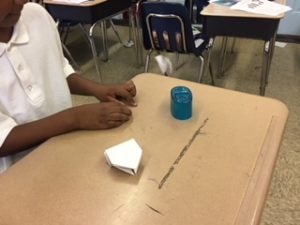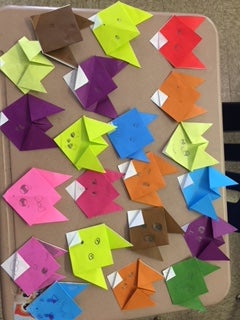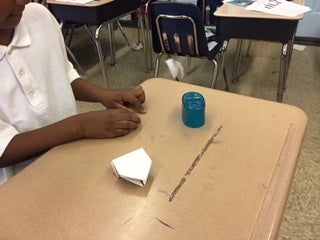TIP Fellow Terry Anne Wildman Teaches Origami in Class June 20, 2018 – Posted in: Uncategorized
Terry Anne Wildman describes how she’s using what she learned in the TIP seminar “Origami Engineering” to teach the students in her class at Alexander McClure Elementary School qualities like perseverance and patience through origami. The following are excerpts from Ms. Wildman’s description of her experience teaching her origami curriculum.
When teaching something to students that has many steps, you need to use different strategies to reach all students. I knew teaching origami shapes and figures to my students might be challenging, so in addition to using a document camera and Smart board, I met with four students who I knew would be interested in learning more about origami and asked them if they would be “experts” in the classroom when I introduced a new origami figure. I also integrated geometry in my lessons so that students who needed more concrete examples could get that practice while making the figures. I reviewed what we learned from the previous lessons and asked students to tell me what, for instance, a perpendicular line was. My students responded very well. We started with simple folds like the heart shape and ended with my complex designs such as the jumping frogs. My “experts” went out on their own using YouTube to learn more complex modular shapes.

What we learned in the TIP seminar “Origami Engineering” was how scientists and engineers use equations to understand the construction of complex origami designs. We also learned about 3-D construction, movable designs, and modular shapes. Embedded in these lessons were step-by-step instructions by Professor Sung that helped me to understand how to present these procedures to my class. Origami is an activity in which a person needs to use precise folds and creases. You need to follow step-by-step instructions to persevere in completing your design. Many things that students learn in life will take perseverance and patience. My students took these lessons seriously, and were engaged, challenged, and rewarded when they completed their designs.




